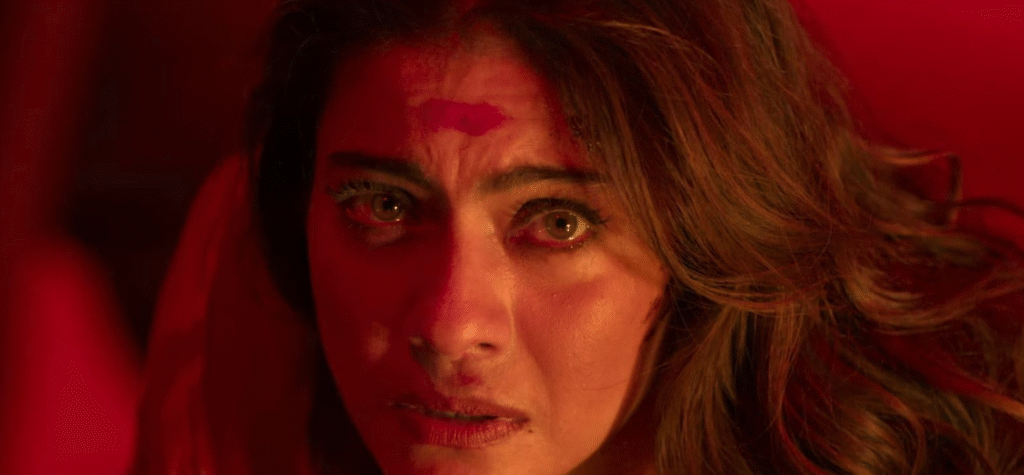Rituals followed blindly can become curses. This film shows why they must be understood

Spoiler alert: Screen Saga provides you with a detailed review. So you will get to know the entire storyline from this digital piece and other noteworthy scenes that deserve your attention.
Part 1: The Birth and the Return
The film opens in the village of Chandrapur, where a sacred yet chilling ritual unfolds. A woman gives birth to twins, one male and one female. But tradition demands a sacrifice: the female child is offered to Maa Kali, a ritual seen as appeasement, but one that sets the tone of darkness and devotion in the village’s way of life.
At the same time, another child is born, Shubhankar, in the same family. Unlike the others, his destiny will take him far from the grip of these customs. Forty years later, Shubhankar has built a new life in Calcutta. Educated, modern, and skeptical of blind faith, he has deliberately left behind his village and its rituals. He now lives peacefully with his wife Kajal and their daughter, far removed from the sacrifices and superstitions of his past.
But peace never lasts. News arrives that his father has died, and tradition calls him back. Despite his resistance to the old ways, Shubhankar must return to Chandrapur to fulfill his final rites and, in doing so, step back into the world he once abandoned.
Part 2: The Curse of Chandrapur
After returning to Chandrapur, tragedy strikes. Shubhankar’s father dies unnaturally, deepening the sense of unease surrounding the village. It is in this moment of grief that the dark history of Chandrapur is revealed.
Long ago, when Maa Kali slew the demon Raktabeej, his blood spilled onto the earth. One drop fell in Chandrapur, and from it, new demons began to rise. These creatures preyed upon the village, abducting infant girls and attempting to impregnate them to spawn more demons. But the children were too fragile to survive the demon’s power, and they perished.
Desperate for deliverance, one devotee of Kali prayed for guidance. Maa Kali granted him the strength to slay the demon. Yet before he could succeed, the demon sought vengeance: he entered the devotee’s home and impregnated his infant daughter. To prevent her from birthing more demons, the father was forced to kill his own child.
That act of sacrifice became tradition. Generation after generation, Chandrapur came to believe that every female child born in the village must be killed at birth. Only by continuing this ritual could they ensure the demon never returned.
And so what began as an act of desperate faith solidified into an unbreakable curse, a curse Shubhankar now finds himself entangled in.
Part 3: The Wrath and the Misinterpretation
Days later, Shubhankar’s wife Kajal, and their daughter return to Chandrapur with a practical intention to sell the ancestral home and finally cut ties with the village. But what begins as a matter of property soon spirals into terror.
They discover that the legends of Chandrapur are not merely stories. The curse is real. And it resurfaces just as Shubhankar’s daughter enters puberty, the moment when the demon once again seeks to claim her.
The demon abducts the girl, and in desperation, Kajal turns to Maa Kali for help. Her prayers are answered: Kali grants her divine strength to fight. Armed with this blessing, Kajal confronts the demon. At first, she is defeated, her mortal body unable to withstand his power. But death is not her end. Maa Kali possesses her, resurrects her, and through her vessel, returns to slay the demon once and for all.
Yet victory is not without horror. The demon has already impregnated the daughter. Following centuries of tradition, Kajal prepares to kill her own child to stop the curse. But in this moment, she cries out to Maa Kali — demanding to know how the Goddess could command such cruelty.
It is then that the truth is revealed. The souls of all the murdered daughters of Chandrapur rise, returning to Maa Kali, their divine mother. In that instant, Shubhankar’s daughter suffers a miscarriage the demon’s seed is gone. She is freed without sacrifice.
The revelation is devastating: Maa Kali never asked for the killing of her daughters. The villagers had misunderstood her will for centuries, creating generations of needless bloodshed. What was meant to be faith became fear. What was meant to be devotion became distortion.
And so the curse ends not through blind obedience, but through clarity and truth.
The Contradiction You Noticed:
- Early belief in Chandrapur: Maa Kali wanted the sacrifice of daughters to prevent demons from being born.
- Final act: When Kajal prays, Maa Kali gives her power, but instead of asking for another sacrifice, she causes a miscarriage in the daughter; no child is born, the curse broken.
So it feels like Kali’s will changes first demanding blood, then showing mercy. That’s the plot hole.
How We Can Make Sense of It
The key is: Maa Kali never wanted human sacrifice at all.
- In the origin myth (when the first devotee killed his daughter), that wasn’t Kali’s instruction; it was a human’s desperate misinterpretation.
- The people then passed this misinterpretation down as “tradition” for generations.
- When Kajal confronts Kali directly, the truth is revealed: the Goddess only ever wanted devotion and courage, not blood.
So the miscarriage is not a contradiction, but a correction. Kali shows her true power by breaking the cycle of violence without requiring another child’s death.
Should You Watch It?
Absolutely.
The story is gripping from start to finish, layered with mythology, emotion, and suspense. The VFX, CGI, and background score are stunning, pulling you deep into the world of Chandrapur. The director has done an incredible job bringing this unsettling tale to life.
But beyond the craft, the film leaves us with a powerful message:
Rituals are not meant to be blindly followed; they are meant to be understood.When we lose sight of their meaning, rituals can turn into tools of fear, violence, and even massacre. When we search for their truth, however, we find liberation.
Watch The Trailer Here
More Bollywood recommendations, click here: Bollywood Movies






